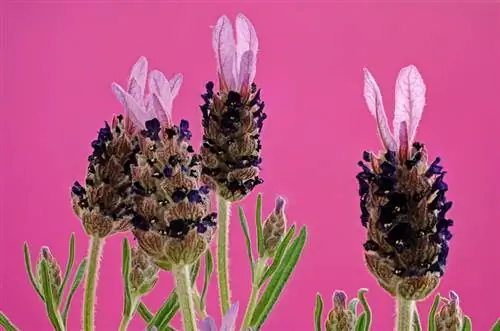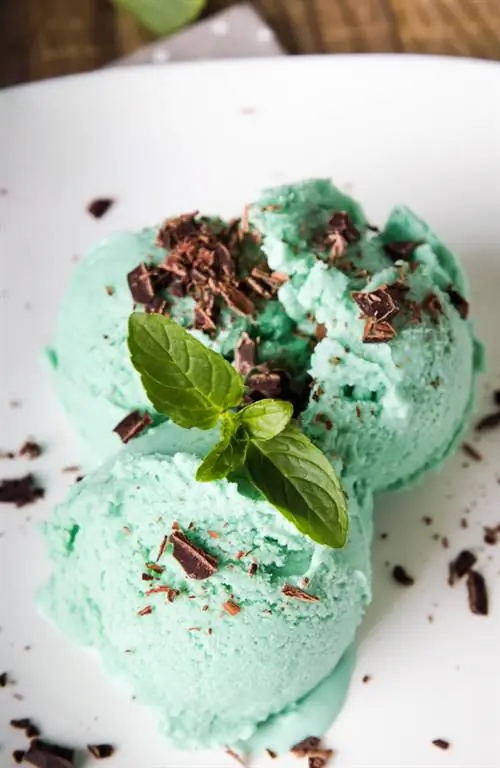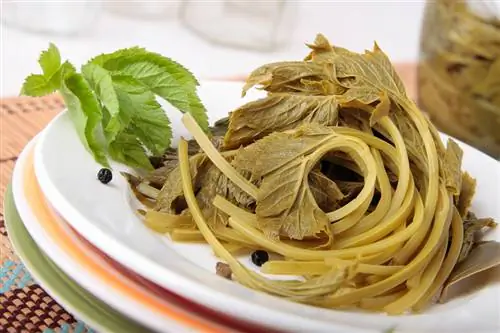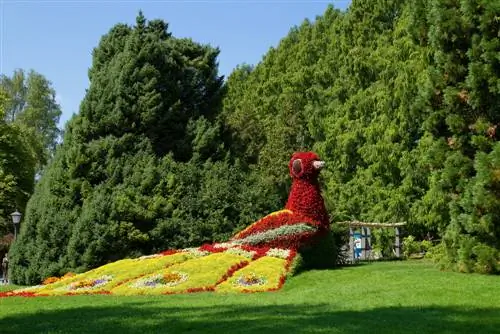- Author admin [email protected].
- Public 2023-12-16 16:46.
- Last modified 2025-06-01 06:02.
Moses have a simple blueprint that does not require any energy-sapping seeds. Instead, the rootless land plants develop extremely fine spores in order to reproduce. You can find out here how you can use moss spores for multi-faceted application scenarios with a little sensitivity.
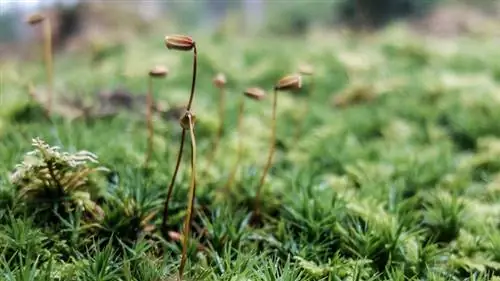
How to grow moss from seeds?
Moss seeds are actually spores and can be used to grow moss as ground cover or bonsai underplanting. To do this, spore capsules are collected, crushed and applied to potting soil or bonsai substrate.
Moss spores - reproduction at high speed
They are microscopic and start life at 36,000 times the acceleration of gravity. Moss spores reach an average size of 0.001 mm. Even the almost invisible seeds of orchids, at an average of 3 mm, appear like giants.
The spores of moss plants make up for their nano size by rapidly ejecting them from their capsule to ensure large-scale spread. At least we can clearly see the spore capsules, as they are 2 mm in size and sit on stalks above the moss cushion.
How to grow ground cover for the bed from moss spores
Any hobby gardener who loves a challenge doesn't collect moss in the forest or buy it from the garden center to green up a shady, dreary bed. With moss spores you can grow the desired number of moss patches, which, when planted out, combine to form a lush green ground cover. This is how it works:
- Flat seed trays (€35.00 at Amazon) fill with peat sand or emaciated cactus or succulent soil
- Use scissors to cut off the stems with the spore capsules
- Pluck the capsules from the stems and carefully crush them on a plate
- Pick up the spores with a fine brush and apply to the potting soil
- Do not spray the substrate, but water the bowl from below
Put a transparent plastic bag over the container. When placed in a shady location, water from below every few days. Only when a green coating develops can the hood be removed. Plant the fully grown moss pads in a shady, cool location on a base of lean, acidic substrate. At a distance of 5 to 10 cm, the moss quickly forms a compact ground cover.
Planting a bonsai with moss spores - This is how it works
In order to give your bonsai a natural appearance with a green carpet of moss at its feet, the detour via the seed tray is unnecessary. After you have harvested the capsules and picked up the spores with a brush, simply brush them onto the moistened bonsai substrate. Until the spores germinate, cover the bonsai pot with a plastic bag and water from below.
Tip
If specialist retailers offer moss seeds, they are usually star moss (Sagina subulata) from the genus of fattening herbs. Apart from the delicate, white flowers from May to July, the carnation plant with its thick, green cushions looks very similar to real leaf moss.


